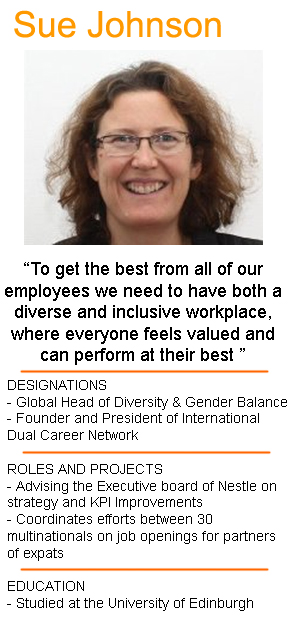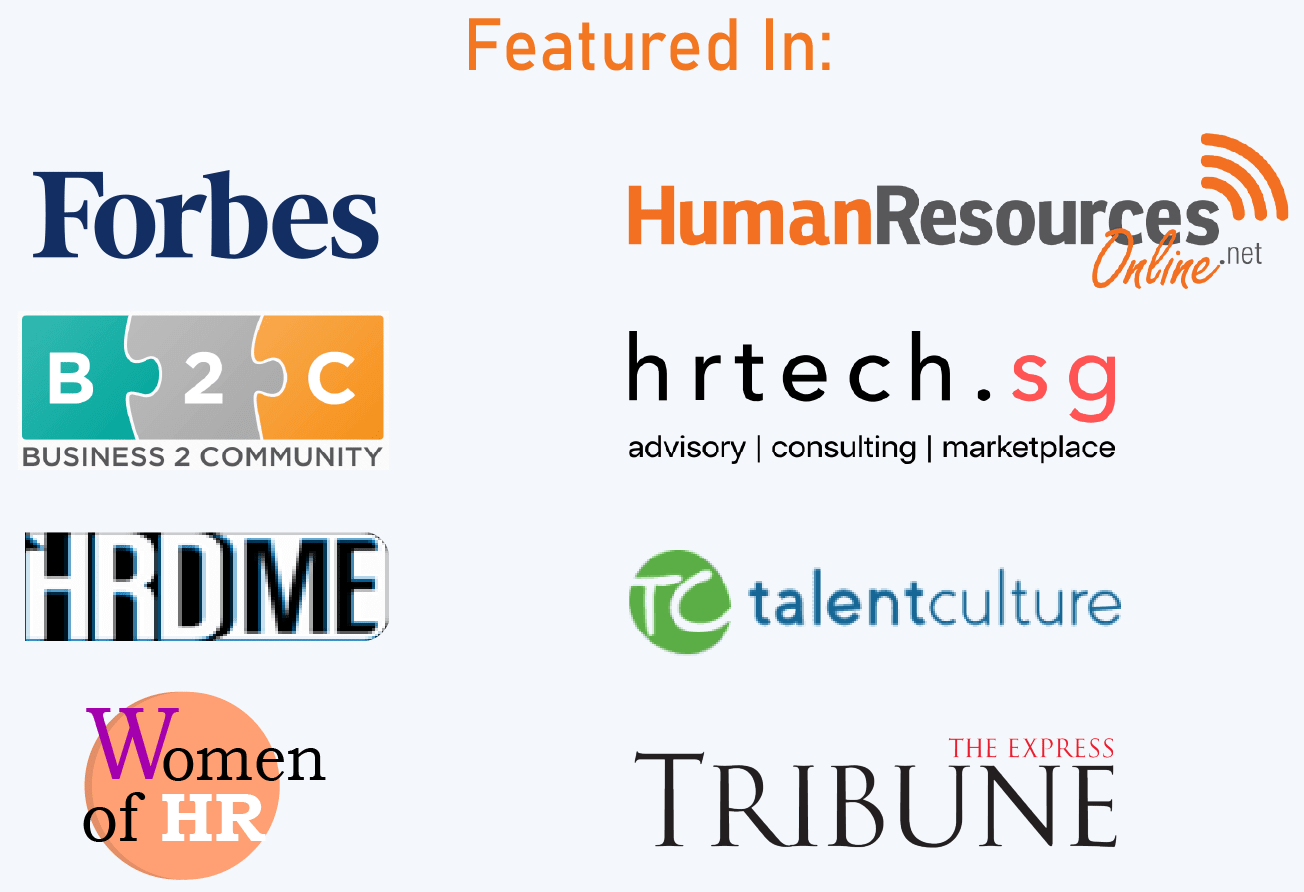Gender diversity is a favorite topic of mine and apparently I’m not the only one. Sue Johnson, head of the Gender Diversity Program at Nestle was kind enough to give her views on the initiative, barriers women face in the work place and general advice on women in the workforce. She’s also the founder of the International Dual Career Network which links 30 multinationals together to facilitate job search for partners of expat employees.
Q. What is Nestle’s  Diversity Program about, specifically in the Middle East and Asia?
Diversity Program about, specifically in the Middle East and Asia?
A. Nestle started its journey on Gender Balance in 2008. We have focused solely on gender balance through this time as this was the area where we had the biggest opportunity to improve, and the strongest business case.
We will be expanding into other areas of diversity in 2015. For the Middle East and Asia, the focus has been the same as in all other countries, it starts with data, knowing the current situation, senior leadership awareness about gender balance, the business case and building a market action plan, then cascading this awareness through the organisation.
There has been a lot of focus on creating a workplace “ecosystem” where men and women can progress in their careers equally, eg flexible working, solutions for working parents, mentoring, networks etc. each market focus has been slightly different based on the cultural situation in their market.
Q. Why was there a need of a “Diversity” program at Nestle? Can you think of any specific examples?
A. Women make up over half of the world’s graduates, we [at Nestle] need to be attracting and retaining the best talent in the world. They make up over 70% of our shoppers, and we know that we need balanced teams to benefit from the complementary of thinking when men and women discuss and debate together. The process takes longer than single gender teams, but the final output is stronger and more robust. Men and women teams are equally innovative, however gender diverse teams innovate at a level 50% + higher!
Regarding diversity from a broader standpoint, the biggest challenge future leaders will face is managing people different to them – different generations, social backgrounds and nationalities. To get the best from all of our employees we need to have both a diverse and inclusive workplace, where everyone feels valued and can perform at their best – this is the key to ensuring Nestle is successful for the next 150 years.
Q. What is the greatest barrier faced by women In the constant battle of getting woman into top leadership positions in Asia?
A. I think the challenge of getting women to the top of the organizations is the same in all countries of the world, and is a combination of many factors, which are different country to country. In all the McKinsey and Catalyst research, the percentage of women reduces at every step of the corporate ladder, for a variety of reasons:
- Challenge of balancing work/life priorities
- Unconscious bias in the selection process
- Women not putting themselves forward for promotion etc.
This is why we are focusing on creating a workplace ecosystem where men and women can progress equally. In some markets this means opening a daycare at every site, in others introducing home office, others a concierge service – we are adapting our solutions to the needs of our workforce. The last challenge for me is time. Gender balancing a company takes time and we need to ensure we have all the building blocks in place to support a meritocracy where the best person gets the job
Q. During your visit to Asian countries, what’s the one thing that stuck out about women in the workforce?
A. What struck me in my recent visit to Pakistan was what strikes me when I visit any market from the Head Office, just the amount of incredible talent we have in our company! Highly educated, capable and ambitious, a great formula to support the gender balance initiative!
Q. What challenges can companies face when trying to retain women as leaders?
A. When you look at why women (and men) leave, there are different reasons at different periods of their lives. For example in the 20s it’s to get more money/experience with different companies, in the 30s it’s to set up their own company to enable them to manage their work-life balance challenges or they are following their spouse on a relocation. We need to ensure we are being transparent with our employees on their performance and potential in the company, so they can see themselves being a part of the future along with feeling valued and respected.
Q. What would you have done differently in your own career?
A. I never look back and so cannot think of anything I would change!
Q. What’s the one piece of advice you’d like to give women who are just starting their careers?
A. Promise what you will deliver, deliver what you promise and network like crazy
From all her insights, her stress on networking and understanding of the complexities of diverse teams really stands out for me. I can’t think of a single business or industry where these two points don’t stand out as two of the most important points to become a successful business. If you’d like to receive more on gender diversity and talent management in Asia, make sure to subscribe to the blog.




[…] who’s doing great things in gender diversity I’ve already mentioned Nestle in my interview with Sue Johnson. Their diversity program is pretty rock solid and is doing some great things globally. A couple of […]
[…] who’s doing great things in gender diversity I’ve already mentioned Nestle in my interview with Sue Johnson. Their diversity program is pretty rock solid and is doing some great things globally. A couple of […]